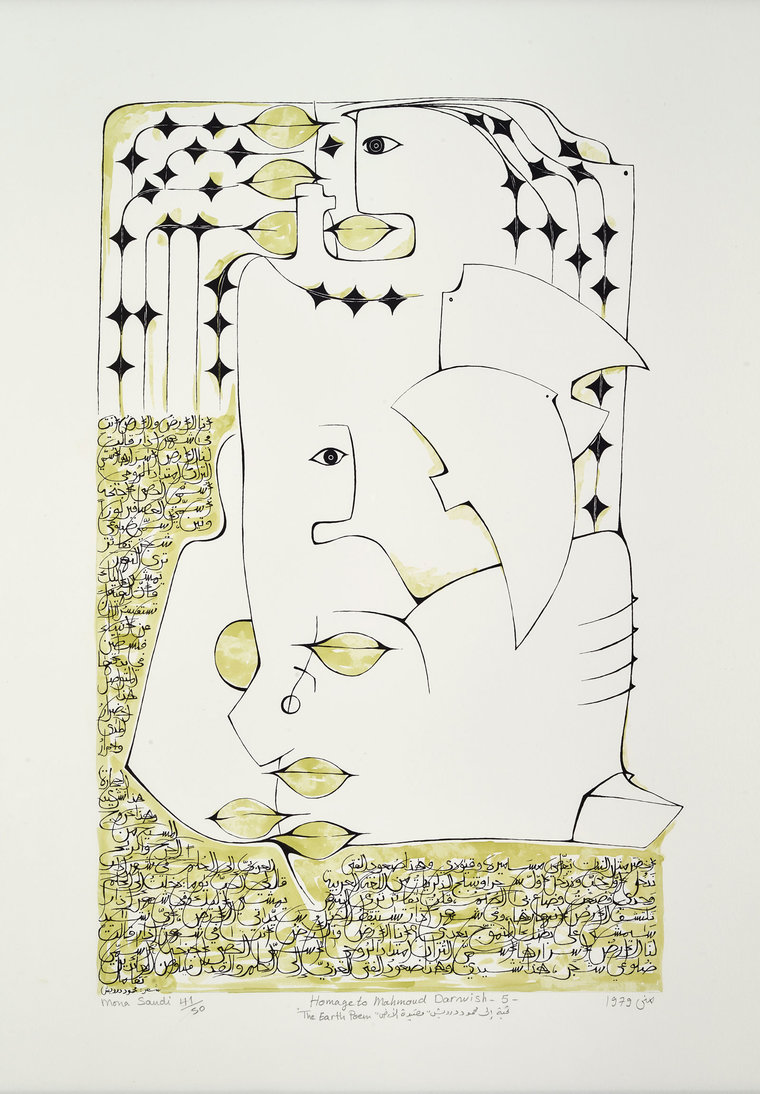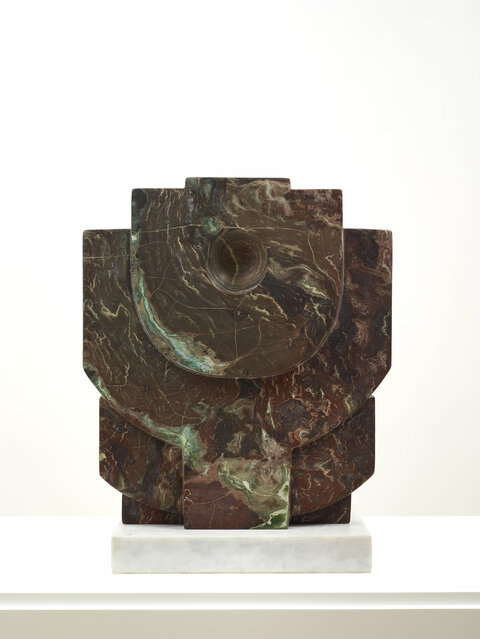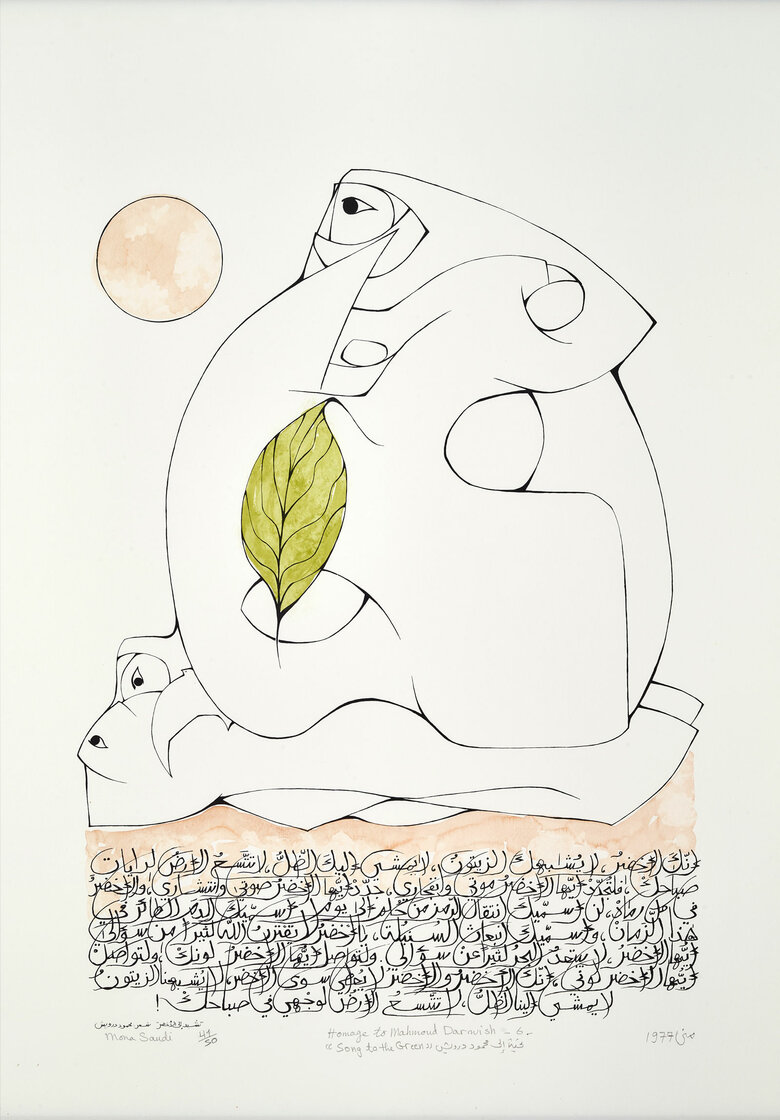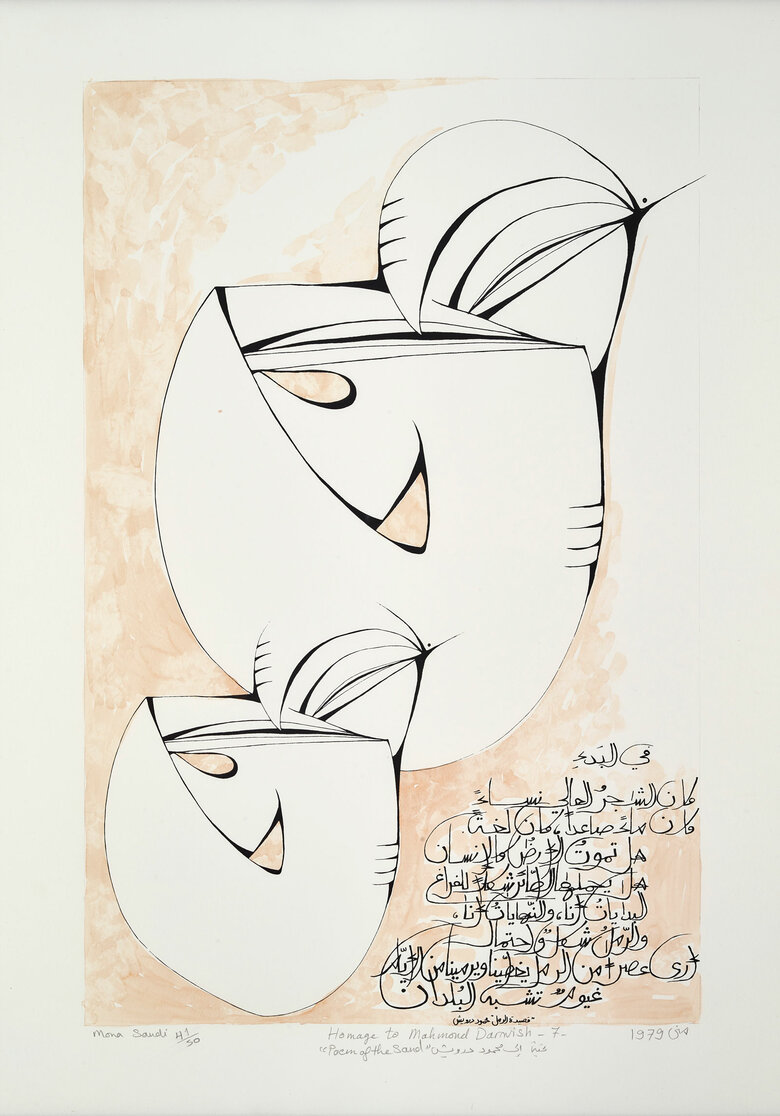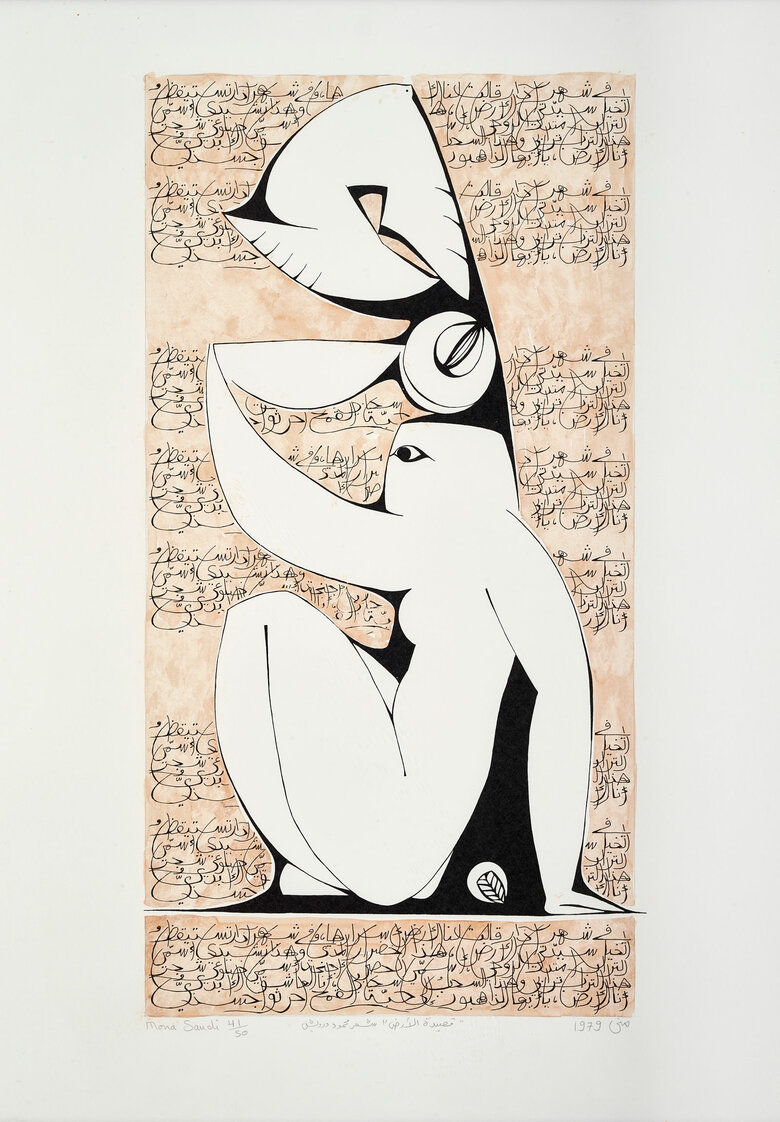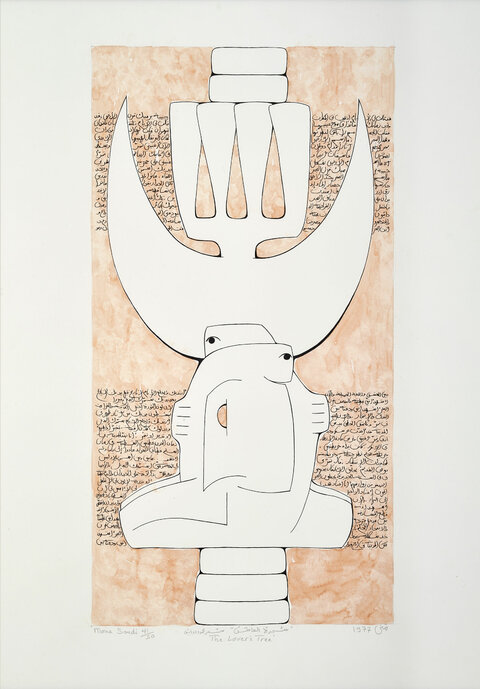Jordanian artist Mona Saudi is renowned for her work in sculpture, which often take on subdued, totemic-like shapes reflecting the natural world and the environment she drew inspiration from. The same approach extends to her stylistic choices when it comes to printmaking. One of the most notable examples of Saudi’s printmaking is her series Homage to Mahmoud Darwish, 1976-1980. This series consists of silkscreen prints on paper with applications of watercolor – she sometimes used diluted coffee to represent the color of the desert – featuring handwritten copies of selections of Mahmoud Darwish’s poems.
Saudi was deeply intrigued by Darwish, as his poetry resonated with themes of exile, resistance, and the Palestinian experience, mirroring her own cultural and political beliefs. Their friendship, which began in the 1970s, significantly influenced her work, driving her to translate his lyrical and emotive verses into visual form.Her choice of printmaking as a medium, and her use of engraving and etching in other works, allowed her to translate the nuanced emotions and imagery of poetry into visual form. She utilized etching, an intaglio printmaking process that involves using acid to carve a design onto a metal plate, which is then inked and pressed onto a paper to create an image. This method is fundamentally a tactile process that complemented Saudi’s sculptural work as they both involved material interaction.
The visual elements in Homage to Mahmoud Darwish Series, 1976-1980 prints also reflect Saudi’s sculptural style, featuring distinct geometric lines and curving, feminine organic forms that evoke the themes of growth, land, and identity, similar to those in Darwish’s work. For instance, Song to the Green, 1977 exemplifies these elements through its flowing lines, symbolic use of natural motifs, and integration of handwritten Arabic calligraphy, resonating with Darwish’s themes of connection to the homeland. Other notable pieces in this series include The Lover’s Tree, 1977, one of the first one’s Saudi made, which highlights the unification of man and earth, and was inspired by Darwish’s poem written after the suicide of his friend, poet Rashid Hussein. Poem of the Land, 1979, and This is Her Photograph and This is…the Lover, 1980, bring out similar themes with particular focus on the Palestinian struggle. This is especially evident in the keffiyeh inspired patterns across The Earth Poem, 1979. The series not only pays homage to Darwish’s poems, but also demonstrates Saudi's ability to transform poetic language into visual forms, capturing the lyrical quality of his verses through intricate line work and delicate textures.
signed with edition in English front lower right, title in Arabic and English front lower middle with date and signature in Arabic front lower left

